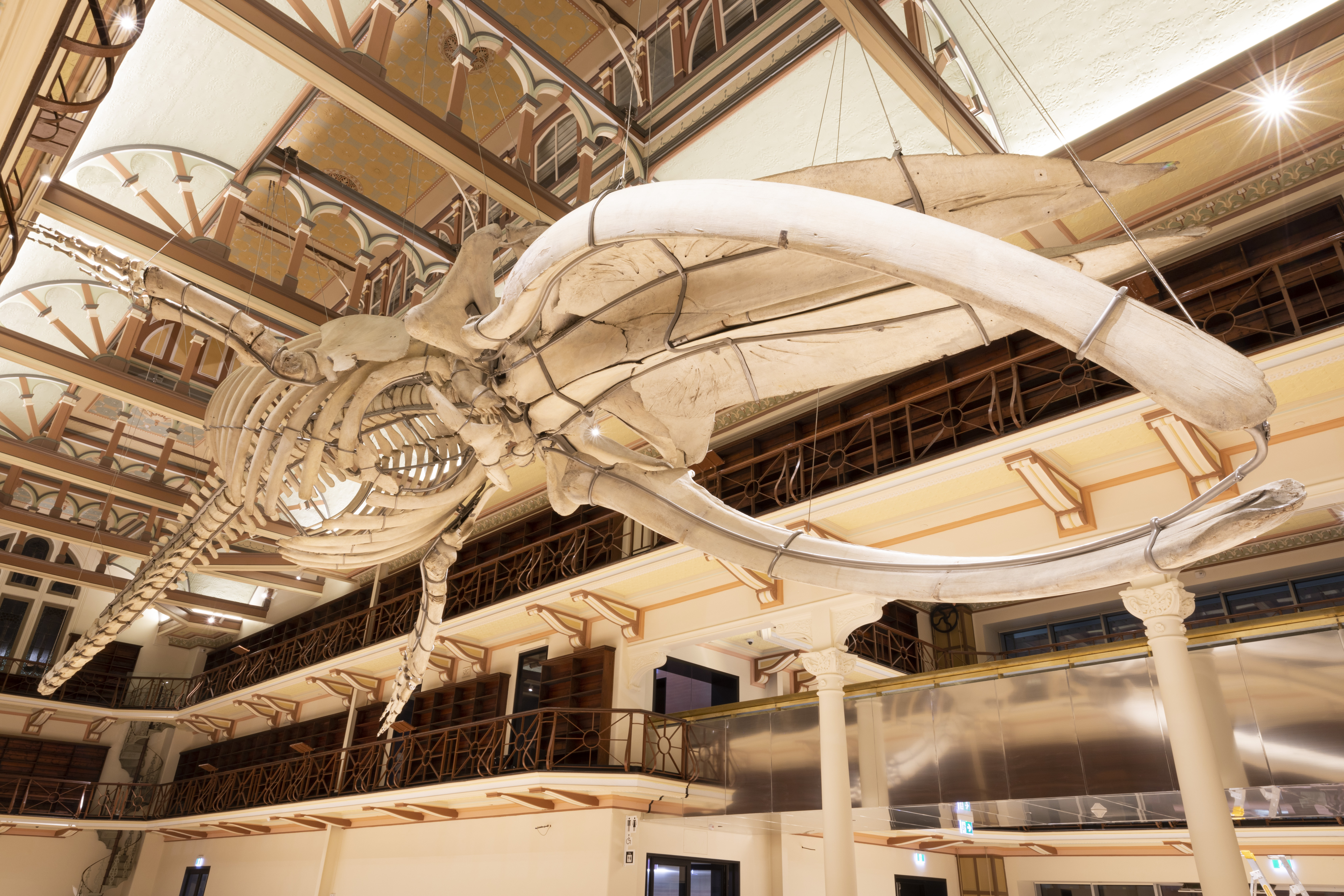There are probably not a lot of things you can compare it to. Getting 300-odd bones out of storage where they have been carefully catalogued and housed for years is not quite the same as packing up a large house and unpacking all your things in a new home.
For Dr Scott Mitchell, head of WA Museum’s Collections Management and Conservation, putting one of the Museum’s oldest and most popular attractions – the blue whale Otto – back together again to go on display at the new museum in Hackett Hall was a massive, intricate and multi-pronged jigsaw puzzle. It took four years, required many hands and gave Scott many restless nights wondering whether a giant whale skull would fit through a certain set of doors.
Not only were the pieces big – like a jawbone which is 6.5 metres long – but they are more fragile than they look, as well as being extremely heavy. Two people spent the best part of a year doing minor repairs to the bones.

“After spending the first part of its life as a skeleton outdoors, when it originally went on display more than 120 years ago, it was exposed to the elements,” says Scott. “Then it was inside in the 1970s in air conditioning. Bones decay over time, so there was repair work to be done.”
Because the bones are so big – and so old – Scott says they expected pieces of the skull to be totally fused. Unlike in humans, where bones fuse early in life, in whales, it happens later in life and after the age at which the blue whale died. The skull alone weighs more than 800 kilograms and it was crucial that the armature supported the bones properly.
“The jaws of a whale have to be flexible because of the way they feed. They are quite elastic when the animal is alive, so one of the big jobs was to make all the bones stable.”
Suspending the skeleton in Hackett Hall, in the Stan Perron WA Treasures Gallery, required experts to create a frame which would hold Otto. A precision-engineered, bespoke metal frame using technology usually reserved for mining and engineering projects was built.
Twenty-four metre Otto is now suspended overhead in a unique lunge-feeding pose in his home in Hackett Hall and Scott now owns a unique photo – one of him standing in the belly of a blue whale. And unlike Ahab in Moby Dick, he lived to tell the tale.